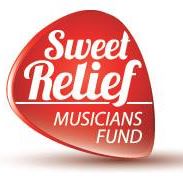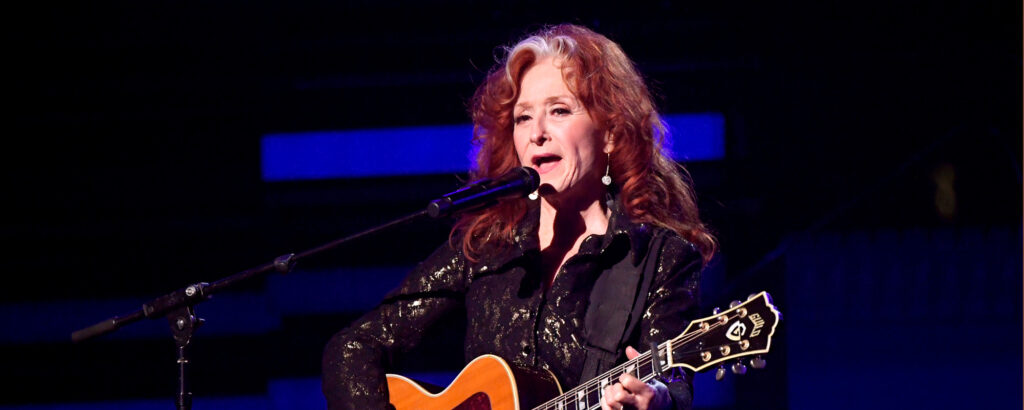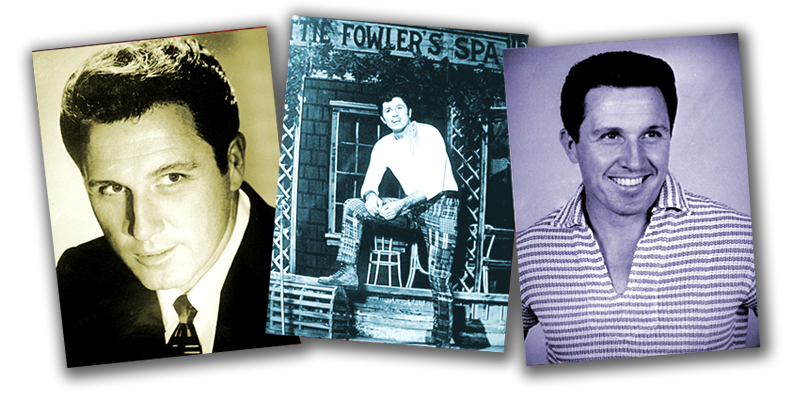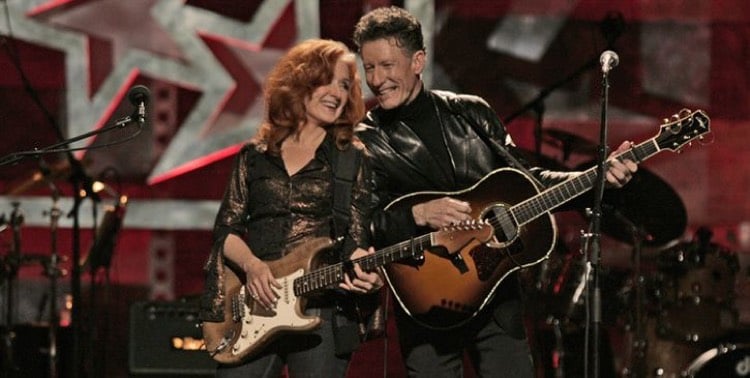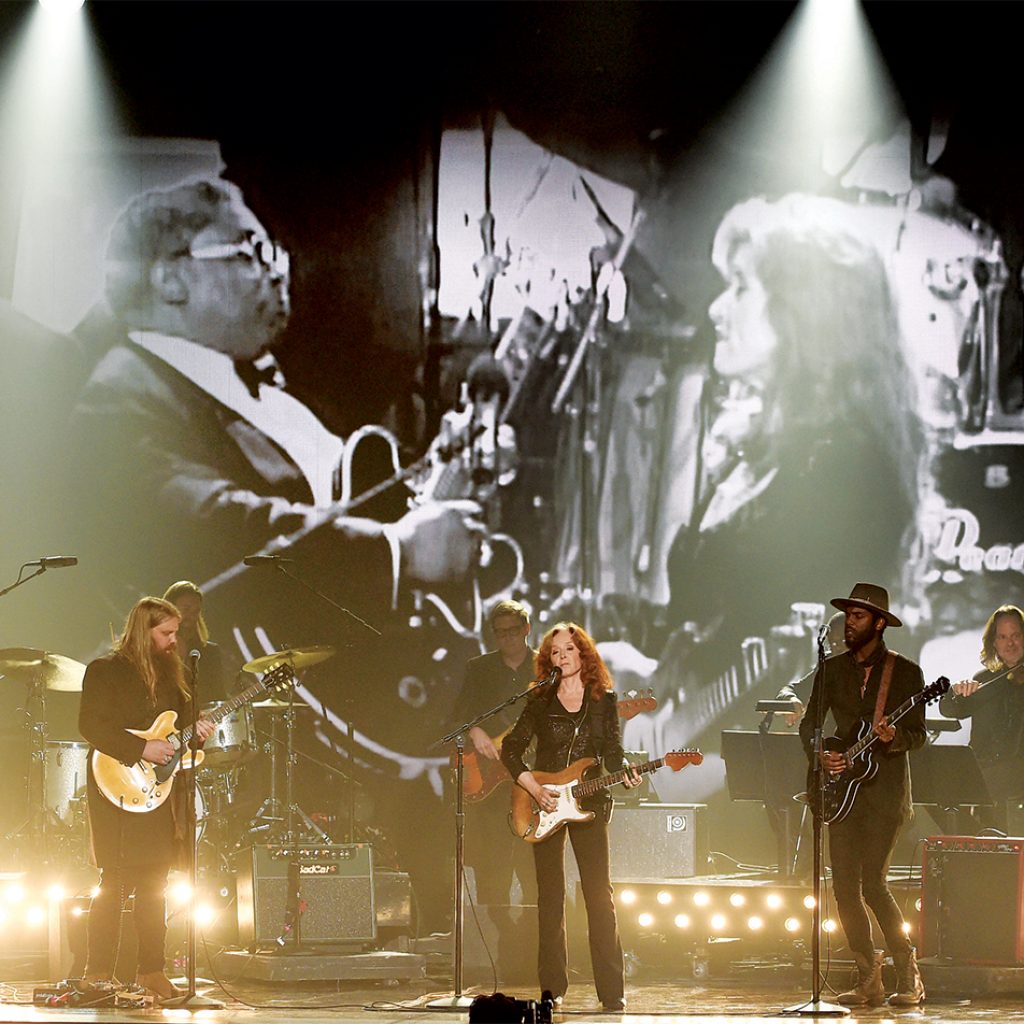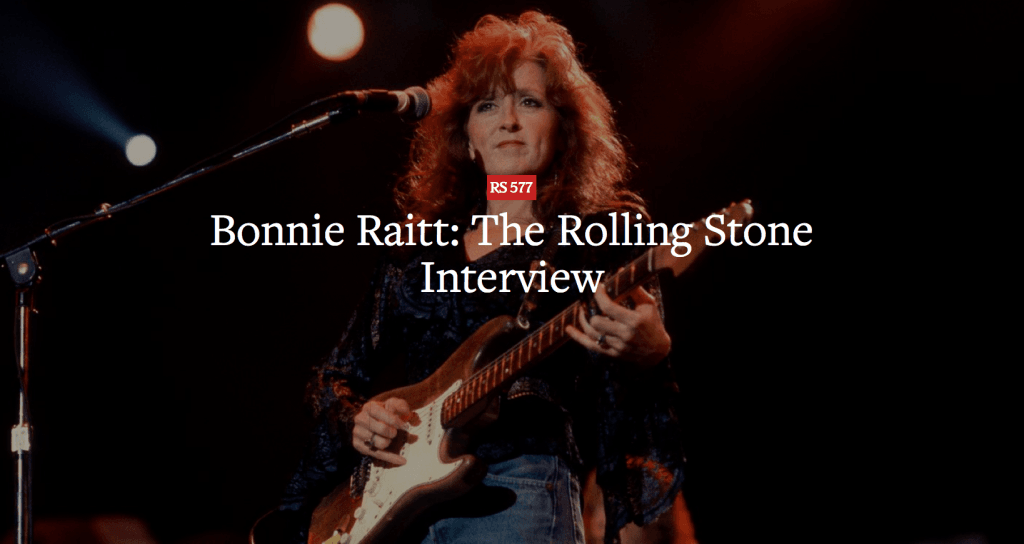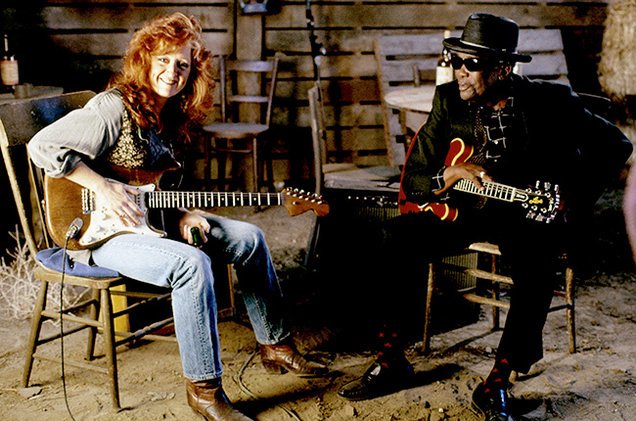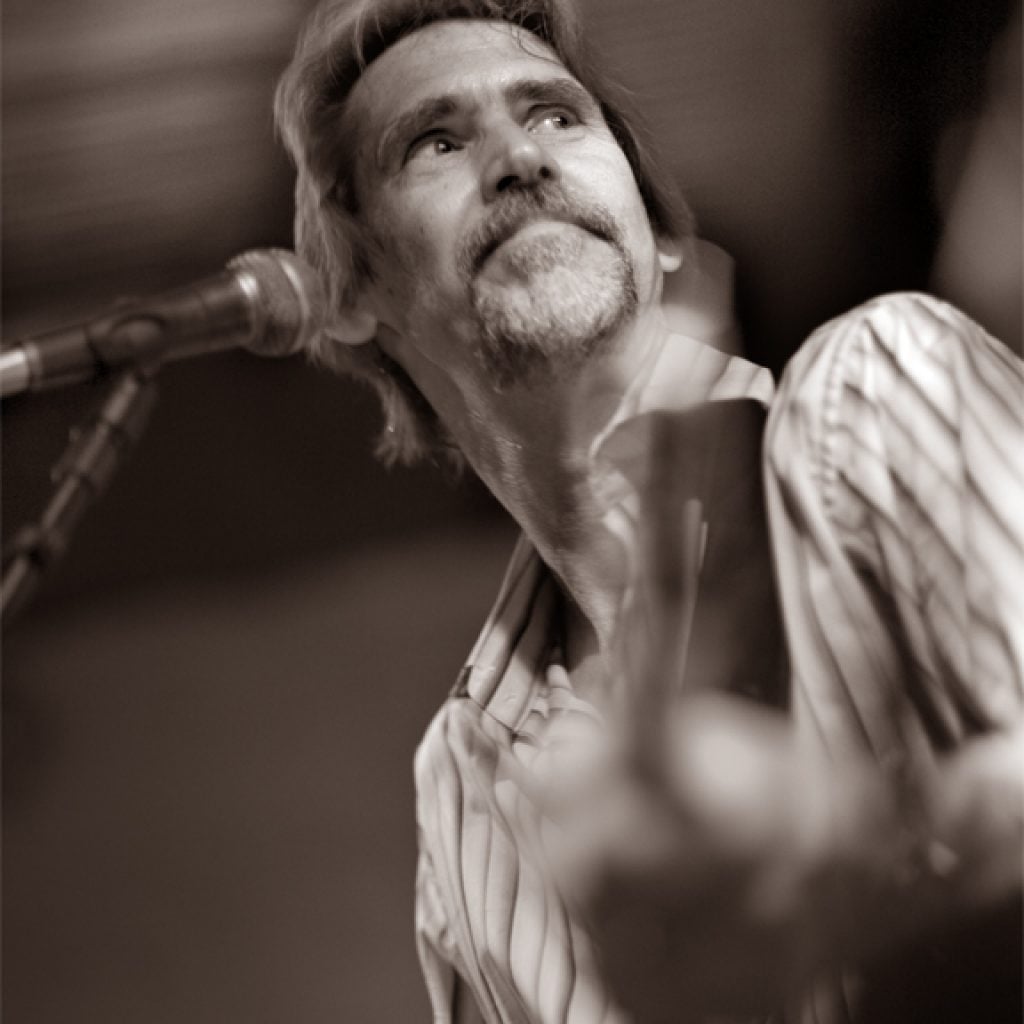
Today, Bonnie Raitt is a music industry veteran, but once upon a time, she was just another 8-year-old kid with a Stella guitar that she got as a Christmas present from her family, according to Raitt’s website. The daughter of two musical Quakers with a history on Broadway, Raitt was born in Burbank and grew up in California, per Britannica.
Her sense of adventure later led her across the country to attend school in Cambridge, Massachusetts, where she studied social relations and African studies, but Raitt dropped out of Radcliffe College in 1969 to pursue music. Through some combination of the connections she’d forged hanging around Cambridge’s music scene and sheer luck, she soon found herself opening for famous blues acts, including Son House and John Lee Hooker.
In her own words (via her website), “I’m certain that it was an incredible gift for me to not only be friends with some of the greatest blues people who’ve ever lived, but to learn how they played, how they sang, how they lived their lives, ran their marriages, and talked to their kids.”
Bonnie Raitt breaks into the industry
© David Gahr /Getty Images
After she dropped out of Radcliffe, a restless Bonnie Raitt immersed herself in the music industry, specifically the blues scene. She soon enlisted the services of the well-known blues manager Dick Waterman, according to Allmusic. With Waterman’s help, she began sharing a stage with blues dynamos like Fred McDowell, Sippie Wallace, and Howlin’ Wolf.
Even as Raitt was working hard to get started playing music professionally, Raitt was also becoming politically active. She dedicated her time to antiwar and civil rights scenes in Cambridge, per her website, and she continued to be an outspoken liberal activist after she left Radcliffe to tour the country with the elder statesmen of blues. Eventually, as word of mouth on the blues circuit cemented Raitt’s status as a promising up-and-comer, Warner Bros. signed the young red-haired musician to its music label. According to Raitt’s website, her first album was soon to follow that lucky break.
She produces her maiden album
© Leni Sinclair /Getty Images
Once she signed with Warner Bros., Raitt was ready to release her first album. Her self-titled debut effort came out soon thereafter, in 1971, per her website, and it was influenced by blues greats like Robert Johnson and Sippie Wallace. To record the album, she traveled to Minnesota, where she spent her weekdays singing blues alongside the band Willie and the Bumblebees. When she wasn’t occupied recording, she could be found by the pool, playing sports, and hanging out with friends, according to The Current.
The end result mixed covers and originals and spanned 11 tracks. While the album later came to be considered artistically successful and influential to future generations of female blues singers, according to Viva Scene, it was a commercial flop. But Raitt was just getting started, and she had a long road ahead of her which would come to include multiple hit singles, at least one top-of-the-charts album, and 10 Grammys.
She stays politically active, just like her parents
© Richard McCaffrey /Getty Images
Like her parents, Raitt became politically active as an adult. And as she found her musical voice, she also began incorporating her political activism into her musical life. For example, she co-founded Musicians United for Safe Energy, an industry group opposed to the expansion of nuclear energy use, and headlined a benefit concert for the group in 1979, per Britannica.
An outspoken feminist, Raitt also advocated for Black blues musicians whom she felt were underpaid, according to Viva Scene. She reportedly took personal responsibility for correcting that dynamic, paying fairly and providing benefits for the musicians she worked with, but she also became active in the R & B Foundation, which worked to fix royalty policies, recognize blues pioneers, and give out hefty grants to artists. The other causes Raitt has supported over the years include ending wars in Central America, ending apartheid in South Africa, passing environmental protections into law; and securing the legal rights of Native Americans, per Raitt’s website.
Bonnie Raitt and substance use
© Jim Steinfeldt /Michael Ochs Archives/Getty Images
Despite her involvement in causes she believed in and her strong musical support network, as the years wore on, Bonnie Raitt the road warrior began to show signs of wear. Her drinking caused her to pack on some pounds, as she told The Washington Post in 1989, and it was beginning to affect her music. Her label, Warner, dumped her abruptly around 1983, per Allmusic. All the while, she was struggling to complete records, her collaboration with Prince collapsed, and by the time she forced out the album “Nine Lives” in 1986, some of her fans were bailing, too: The album had the worst sales of any of her records since her self-titled premiere.
“Of course I like to party — that’s why I do this for a living, so I can hang out with cute guys, have a good time and stay up late — but I never did anything that would jeopardize my singing or playing,” Raitt told The Post in 1989. All the same, some of the bluesmen in Raitt’s circles were dropping like flies from too much partying: Lowell George, one former collaborator, died of a heroin overdose. Around the same time, Richard Manuel, Roy Buchanan, Jesse Ed Davis, Paul Butterfield, and John Cippolina died as well. Raitt liked to play “River of Tears” in their honor, but the message their deaths sent was not lost on her.
If you or anyone you know needs help with addiction issues, help is available. Visit the Substance Abuse and Mental Health Services Administration website or contact SAMHSA’s National Helpline at 1-800-662-HELP (4357).
Bonnie Raitt ascends from the ashes
© Tim Mosenfelder /Getty Images
The turning point for Bonnie Raitt came when the partnership with Prince broke down, according to The Washington Post. First, Raitt hurt her hand in a skiing accident and had to spend two months recuperating. Then, Prince wound up prolonging his European tour, even though he had requested Raitt back out of her own summer tour, with the result that the two of them only worked together for three days total.
“The skiing accident was just debilitating enough with my thumb in a cast so I couldn’t play guitar for a couple of months,” Raitt told The Post. “So here it was: I didn’t have an excuse anymore. A situation was created for me; I asked and it was responded to. People reach a point where they look in the mirror and say I’ve had enough. And let’s face it, I was a latecomer in my circle to cleaning up.”
Raitt began seeing a therapist, and she finally joined Alcoholics Anonymous. Getting sober would ultimately restore her musical focus and put her career back on track, but it was a long journey from there to her first hit record, “Nick of Time,” which came out in 1989.
Bonnie Raitt wins four Grammy Awards
After all her struggles and hard work, 1989 proved a lucky year for Bonnie Raitt and she began to turn things around. That year, in addition to seeing “Nick of Time” become a commercial hit, she took home four Grammy Awards. The first was a Grammy for Album of the Year, which she won with “Nick of Time.” The second was for Best Rock Performance, Female. The third was for Best Pop Vocal Performance, Female, for the title track on her new album. Finally, her duet with John Lee Hooker, “I’m in the Mood,” won a Grammy for Best Traditional Blues Recording.
As of the start of 2023, Raitt was the most frequent female Grammy Awards performer — but she also had more Grammy Awards ahead of her. By 2022, Raitt has racked up a total of 10 Grammy Awards for her various performances over the years.
Her career comes roaring back
© Tim Mosenfelder /Getty Images
By the early 1990s, Bonnie Raitt was back in fine form and, in fact, better than ever. She released a retrospective, two-disc live album and two studio albums between 1990 and 1995, according to Britannica. Her two studio albums, “Luck of the Draw” and “Longing in Their Hearts,” both went on to win Grammy Awards.
These successful albums were also being released under a new label. Raitt signed with Capitol Records in 1989, according to her website, allowing her to put out new records with the help of somewhat more reliable partners. It was a satisfying time for Raitt, who had churned out records in her early years but without much recognition or success. Now, by contrast, her albums were going double platinum and receiving the music industry’s highest honor. Raitt was also increasingly working performances by her friends, some of them big names in music, into her albums, creating a series of fruitful collaborations.
She is inducted into the Rock and Roll Hall of Fame
© Stan Honda /AFP via Getty Images
If the Grammys are the music industry’s most vaunted prize, then induction into the Rock and Roll Hall of Fame is perhaps the top accolade for rockers specifically. In 2000, Bonnie Raitt also received that honor.
Joining other legendary performers of her era and generations past, Raitt took the stage after being introduced by Melissa Etheridge, per the Rock & Roll Hall of Fame. She proceeded to deliver a firecracker of a speech, peppered with pointedly feminist notes and nods to the direction she wanted to see the Rock and Roll Hall of Fame take with its future choices.
“I’m flabbergasted,” Raitt said upon her induction. “I know I never expected to make a living at this, let alone take a place next to all these legends I’ve watched walk up these stairs. I’d like to thank you so much for holding me in such high esteem … I’m especially proud to be here tonight because of what it says about what you think is important. I’m proud because it’s partly because I don’t just put on an electric guitar, but because I know how to write it. Let’s hope this marks the beginning of lots more women getting out of the kitchen and into the kick-a** fire.”
Bonnie Raitt produces her first album
© Frank Micelotta /Getty Images
In 2005, Bonnie Raitt scored another win with her first self-produced album, “Souls Alike.” The album drew positive reviews and ascended into the top 20 on Billboard’s chart. It also moved Raitt to get back on the tour bus and start touring again, according to her website.
Critics applauded Raitt’s “bluesy rock” and willingness to venture into new musical territory. “Throughout, Raitt holds her ground without digging a rut,” Rolling Stone declared. “An adventurous change of pace that stretches Raitt beyond her previous recordings,” raved Billboard (via Metacritic).
Those 11 tracks further extended Raitt’s partnership with Capitol Records, with which she had a happier business relationship than her tenure with Warner. In fact, in September 2022, Raitt’s full Capitol music video catalog was remastered and re-released on her official YouTube channel, per PR Newswire. The 13 music videos were reissued as Raitt’s “Nick of Time” became one of 25 audio recordings included in the 2022 National Recording Registry by the Library of Congress.
She continues her political activism
© Kevin Winter /Getty Images
In the aughts, Bonnie Raitt dove back into a host of liberal causes, from John Kerry’s presidential run to giving Democrats control of the Senate in the 2008 election to environmental and anti-nuclear crusades. According to Raitt’s website, she put on a bunch of benefit concerts intended to engage voters and encourage them to vote for Democrats.
Some of the organizations helped by other concerts around that time were the Nevada Nuclear Waste Task Force, the Native Community Action Council, the Everglades Foundation, Musicians United for Safe Energy, Clean Water Action, the Center for Media and Democracy, and more, per Center in the Square. Raitt, who has said she puts citizenship before even music, is also involved with the Guacamole Fund, a nonprofit that links entertainers with left-leaning causes that aim to bring about environmental and social change through benefit concerts and other events held in tandem with media campaigns.
Her ‘Slipstream’ becomes top-selling indie album
© Erika Goldring /Getty Images
Following some time away from recording and performing music, Bonnie Raitt returned in 2012 with “Slipstream,” an intense production put out under the Redwing Records label, according to her website. The 12 tracks meld blues, funk, and rock and feature some of Raitt’s acclaimed slide-guitar playing.
“Slipstream captures the kind of barnstorming fervor that can turn in the space of a song into a slow boil, [a] roiling storm of emotions,” NPR marveled upon the record’s release. “She has the guile and shrewdness of a long-time pro, but it’s the purity of this beautiful mongrel music that gives it its great life.”
“Slipstream,” which Raitt co-produced with Joe Henry, swiftly sold over a quarter of a million copies, becoming one of the year’s top-grossing indie albums. It also won Raitt another Grammy Award for Best Americana Album. Raitt began touring again following the album’s release, traveling North America, Europe, Singapore, Australia, and New Zealand before returning home to play the Kennedy Center Honors.
COVID-19 strikes close to home for Bonnie Raitt
© Kevin Winter /Getty Images for The Recording Academy
When COVID-19 hit, Bonnie Raitt lost some close friends and collaborators, including John Prine, with whom she had spent a significant chunk of the previous year working, according to her website. The country-folk artist, who died at age 73 due to complications from COVID-19, was one of the many musicians we lost in 2020. Raitt recorded a video message mourning her friend the following day, per People.
“I’m having more time to just lay around and read and cook and do all those things I always wished I could do if I had more time,” Raitt said in her opening remarks. “Of course, the reason we’re doing this is heartbreaking, and I’m hoping that we’re going to be coming out of this with lessons learned and appreciating what we have.”
The fact that Raitt was doing things she’d always said she would if she just had more time while her friend had run out of time seemed to be weighing heavily on Raitt, who spoke with sadness in her voice on the video. But she went on to sing the Karla Bonoff song “Home” in Prine’s honor.
Bonnie Raitt releases ‘Just Like That’
© Frazer Harrison /Getty Images for The Recording Academy
In 2022, Bonnie Raitt released the 18th studio album of her career, “Just Like That.” She had spent the pandemic sending her money to and performing for Democratic causes, she told Variety in April 2022, but when she finally got the chance to go out on the road again to support the new album, she felt liberated. Live music, she said, was the medicine people needed after hunkering down in fear for two years and seeing friends and loved ones die.
Raitt’s latest effort mixes old-fashioned blues with 21st-century political consciousness, a fusion of different worlds that evokes Raitt’s own identity. She comes at it from a place of wisdom — not only about her music, but also about life, having been sober for more than three decades.
“I think it’s been really important to have set my compass and set my sail for some higher purpose, and that I try to allow myself some slack and cheat days and all that and forgive myself when I mess up,” Raitt told Variety. “And what’s important is perspective, allowing yourself enough time to have fun and be out in nature and appreciate life and not be so career- or goal-oriented. You don’t care what people think about you as much.”















 Visitors Today : 126
Visitors Today : 126 Now Online : 2
Now Online : 2



